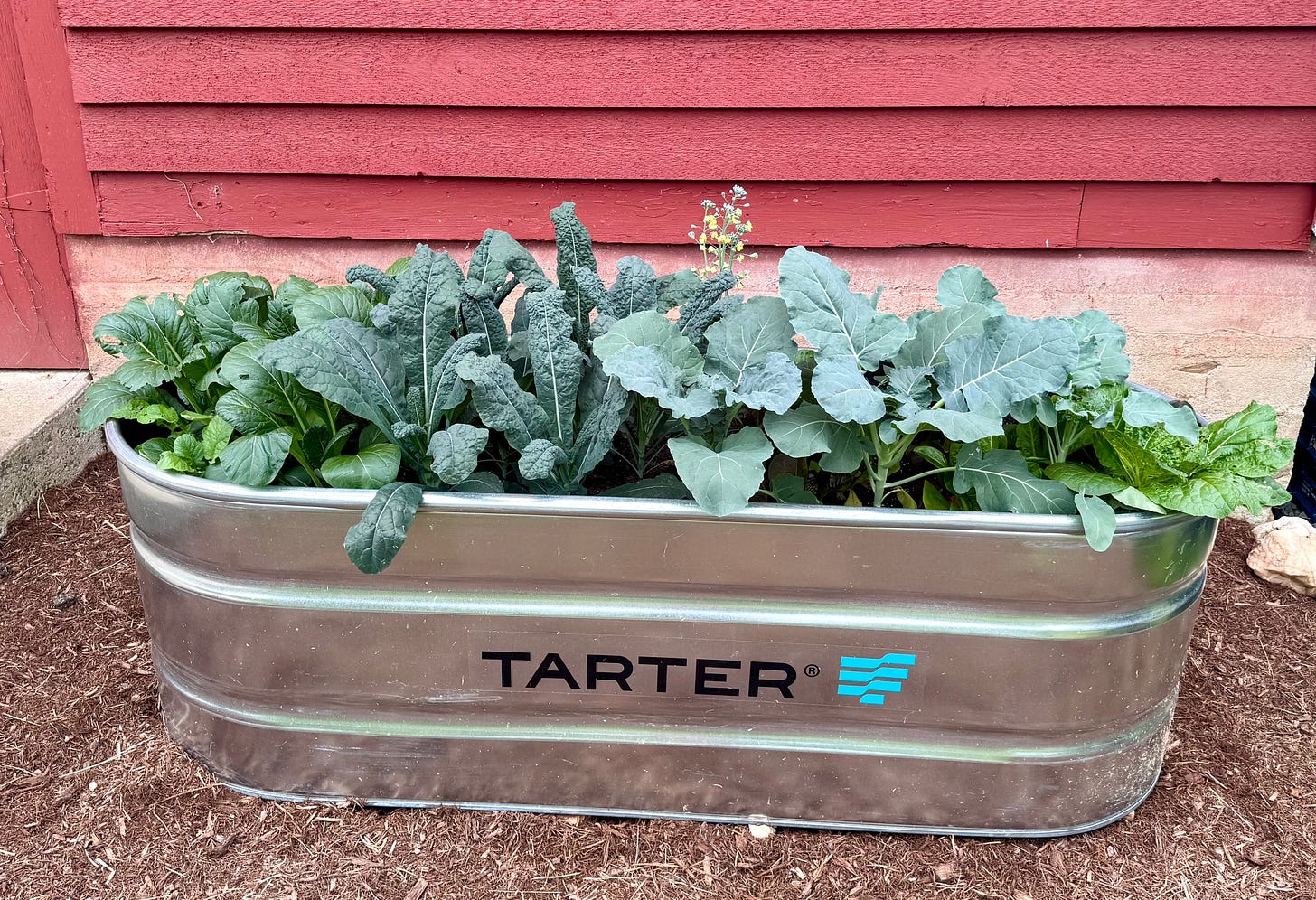how to convert a stock tank into a raised bed garden
bc it is GO TIME to plant your summer garden
Friends. Hear me when I say that *it is not too late* to have an epic garden this summer, and once you gather the necessary materials, you can easily get growing in one afternoon.
So if you want a beautiful, productive raised bed garden this season, keep reading, because today I’m sharing a photo-filled tutorial on how to take a stock tank and turn it into an abundant raised bed garden.
First things first – why use a stock tank as the frame for your raised bed?
I’m guessing that when most people think of a raised bed garden, they imagine a traditional wood-framed bed. And while wooden beds are beautiful and have plenty of benefits, they have one HUGE drawback, which is that inevitably the wood will rot and need to be replaced, sometimes after only a few years. (That said, if you do go the wooden-bed route, cedar will be your best/longest-lasting option).
On the other hand, stock tanks are made from galvanized steel, which is coated in a layer of zinc to prevent rust and corrosion over time. These beds can sit outside in the elements and they will still look (and perform) great many, many decades later.
In just a few manageable steps you can convert a stock tank into a raised bed, and this post will show you exactly how. Let’s get started!
This post will cover:
Different stock tank options, where to source them, the exact link to the stock tanks we have, etc.
How to select a good spot for your raised bed
How to ensure proper drainage
How to fill the bed with soil and other organic matter and how to calculate how much soil you need (and how to save $$$ on this step!)
Link to a nice raised bed soil mix that I recommend, plus two “recipes” for making your own soil blend
All my top tips for planting in a raised bed
PS – If you haven’t already, check out my season-specific vegetable garden guides, which are filled with tons of helpful information about which crops to plant each season, and detailed tips on timing, spacing, my favorite crop varieties, harvesting tips, etc.
Alright, there is a LOT to cover in this post, so let’s jump right in!
A note that this post took a lot of time + effort to put together, and it is available for paid subscribers. My hope is that if you find this information useful, that you will invest in your food-growing endeavors and consider supporting my work as a paid subscriber. Either way, know that I’m rooting for you and I’m grateful you’re here!




